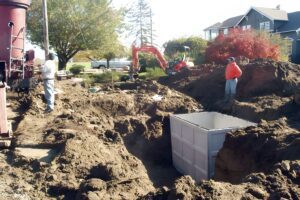Thinking about planting on your drain field or leach field? Some believe that you can’t plant near septic tanks, but in fact many varieties of plants assist your septic drain system in functioning at optimal capacity by continually removing water and organics found in the soils that encompass your field. A lush bed of grass also assists in keeping the entire structure from eroding and plants work the same way.
Choose shrubs that don’t require a lot of water or that are fairly drought tolerant. Water-loving plant roots can grow deep into the ground in search of moisture. The septic tank and septic field are high-moisture environments, so the roots can entangle in the pipes or even break them. Some shrubs that like water, such as boxwood, holly and rhododendron species, have fibrous roots that are less likely to disturb pipes than other, more aggressive shrubs.
Draw a landscaping plan to lay out the location of the shrubs. Plant shrubs near the end of septic drain lines where the soil is drier or at least 10 feet away from the septic tank and septic field lines
Some plant recommendations might be shallow-rooted plants such as flowering perennials and annuals, turf grass, and other short root additions most often will not damage the lines and their root system is usually contained within a few inches of the base stem or trunk. When working with your drain field or leach field, remember to proceed with caution and carefully move the soil as you prepare for the additional shrubbery.




